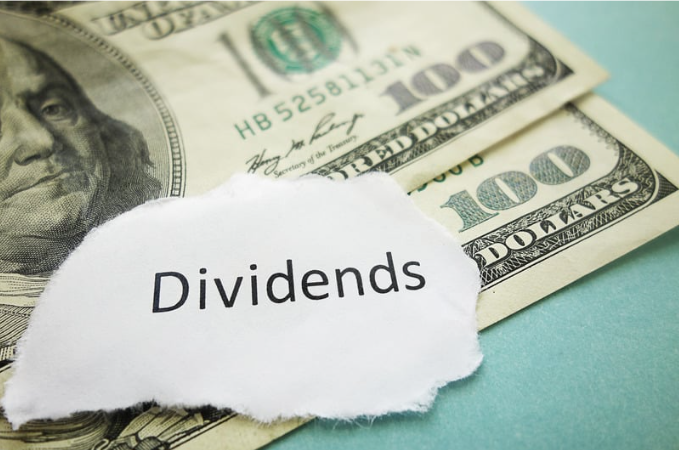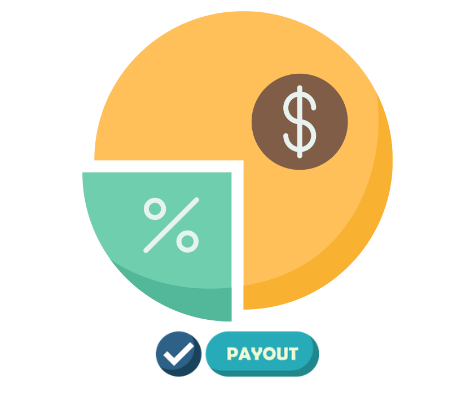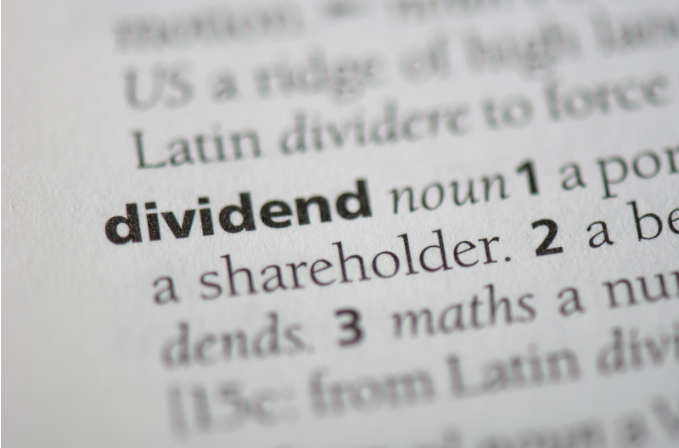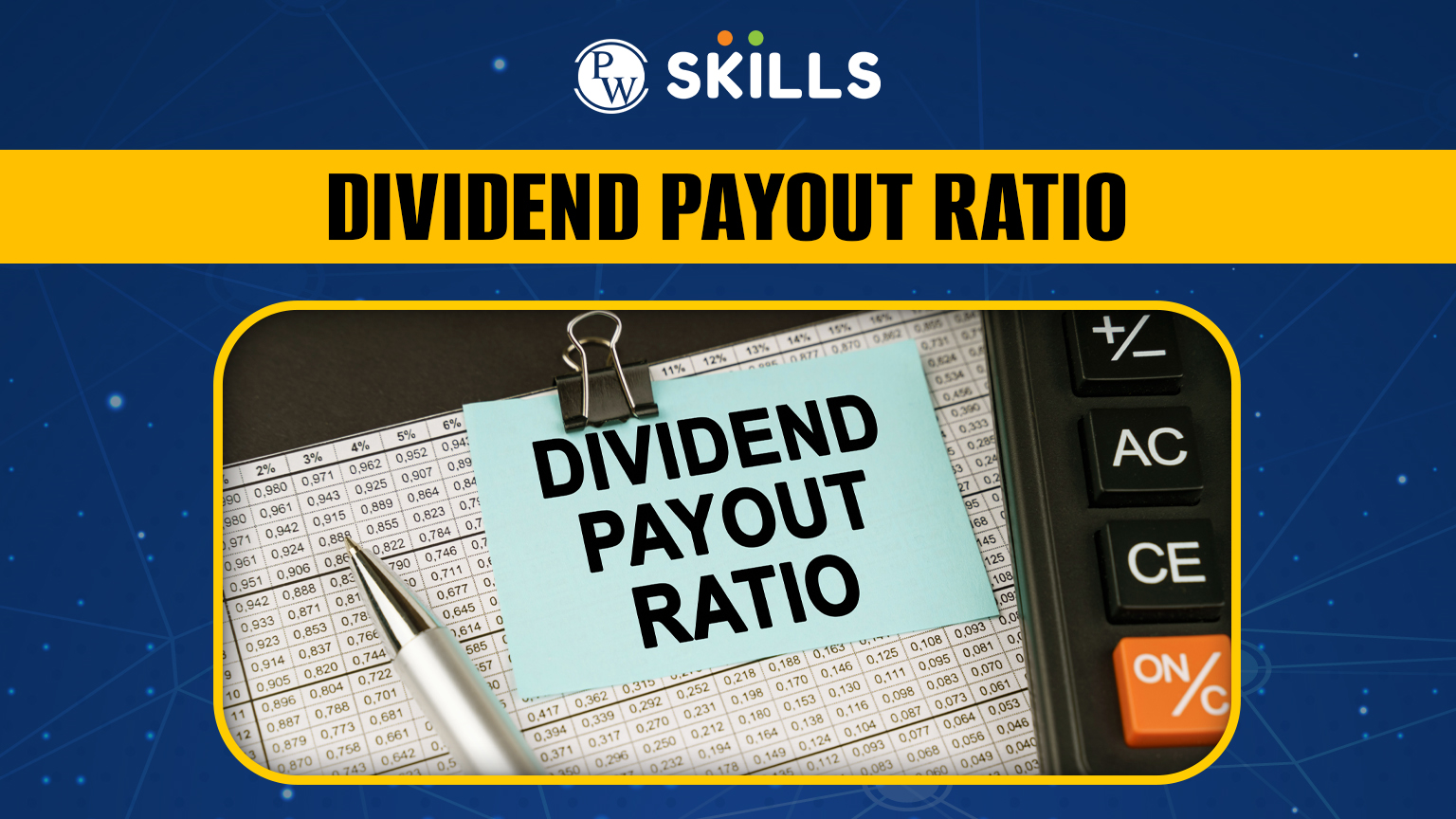The Dividend Payout Ratio is a key financial metric that every investor should understand. It offers valuable insight into how much of a company’s profits are being shared with its shareholders through dividends, reflecting the company’s approach to rewarding investors and managing growth.
Whether you’re assessing a company’s financial health or comparing potential investments, the Dividend Payout Ratio provides a clear window into its financial strategy. In this blog, we will explore the definition, formula, and calculation of the Dividend Payout Ratio, equipping you with the knowledge to make informed investment decisions with confidence.
What is a Dividend?
A Dividend is an additional stock given to the shareholders by the companies as a reward for investing in their business. The company distributes a portion of its profit to the investors. It marks the financial stability of a company and its standing in the market.
Many companies pay a regular dividend to their shareholders once a year or quarterly. However, the decision to give a dividend depends on the company itself. Well, if you are receiving a dividend from the stock you invested, then it is important for you to be well aware of the dividend payout ratio.
Know more about Dividend in the Stock
What is the Dividend Payout Ratio?
The Dividend Payout Ratio is like the “thank you” note a company sends to its shareholders, letting them know how much of its profits it’s sharing with them.
More clearly and technically, the Dividend Payout Ratio is the percentage of a company’s earnings paid out as dividends to its investors. If a company earns $100 and gives $40 back to shareholders as dividends, its payout is 40%. The higher the ratio, the more the company’s profits flow directly into your pockets.
But a dividend payout ratio tells a lot about the company’s personality. A high payout ratio means the company is more focused on rewarding shareholders. In contrast, a low ratio suggests it might be investing in growth, saving for rainy days, or preparing for expansion.
Key Takeaways
- The Dividend Payout Ratio is like a company’s “thank you” note to shareholders, showing how much profit it is sharing with them.
- It represents the percentage of earnings paid out as dividends to investors.
- A higher ratio means the company is more focused on rewarding shareholders with profits.
- A lower ratio suggests the company might be reinvesting in growth, saving for the future, or planning for expansion.
Dividend Payout Ratio Formula

The Dividend Payout Ratio formula is a simple, yet insightful way to quantify how much of a company’s earnings are being returned to shareholders in the form of dividends. The formula for the Dividend Payout Ratio is mentioned below:
Dividend Payout Ratio = [Dividends per Share (DPS) / Earnings per Share (EPS)] * 100
This expression reflects the proportion of a company’s net income that is being distributed as dividends. Let us break it down more formally:
Dividend per Share (DPS)
This is the total amount of dividends paid out by the company on a per-share basis. Essentially, it is how much each shareholder receives for every share they own.
Earnings per Share (EPS)
This represents the company’s total earnings divided by the number of outstanding shares. It is a key measure of profitability, indicating how much profit the company makes for each share of stock.
By dividing DPS by EPS, we determine what portion of the earnings is being passed along to shareholders as dividends. Multiplying by 100 converts this into a percentage, giving a clearer sense of the ratio.
Recommended Course
Dividend Payout Ratio Example
If a company has an EPS of $5 and pays $2 per share in dividends, the Dividend Payout Ratio would be:
(⅖) * 100 = 40%
This means 40% of the company’s earnings are being distributed to shareholders, with the rest being retained for growth, debt repayment, or other internal uses.
The Dividend Payout Ratio thus serves as an indicator of a company’s financial strategy, whether it prioritizes rewarding investors with cash or focusing on investment for future growth.
Also, Check What are Financial Ratios and their importance?
What Is a Good Dividend Payout Ratio?
A good Dividend Payout Ratio can vary depending on the type of company, its industry, and its stage of growth. However, generally speaking, a payout ratio between 30% and 50% is often considered healthy and sustainable for many companies.
This range suggests that the company is striking a balanced approach: it is returning a portion of its profit to shareholders while retaining enough earnings to reinvest in growth, manage debt, or handle any unexpected challenges.

Companies with payout ratios in this range are typically seen as stable, offering both immediate returns and potential for long-term growth. A good Dividend Payout Ratio depends on the company’s financial health, industry norms, and investor expectations. Companies need to maintain a balance that supports both short-term shareholder returns and long-term sustainability.
However, what is deemed “good” can differ based on specific circumstances:
Lower Dividend Payout Ratio (0%-30%):
This may be common in high-growth companies or industries where reinvestment in expansion is a priority. A lower ratio doesn’t necessarily indicate poor performance but rather a focus on future growth.
Higher Dividend Payout Ratio (50%-70%):
Common in mature, stable companies, such as utilities or consumer staples, where growth opportunities are more limited, and investors expect consistent returns in the form of dividends.
Very High Dividend Payout Ratio (above 70%):
While this might appeal to income-focused investors, it can also signal that the company is retaining little for future growth or financial stability. It may be unsustainable in the long term if profits decline or economic conditions shift.
Dividend Payout Ratio Vs Dividend Yield

The dividend Payout Ratio shows how much of the profit is being paid out as dividends, while Dividend Yield shows the return on investment an investor gets from dividends alone. Both are valuable, but they offer different perspectives on a company’s dividend policy.
|
Dividend Payout Ratio vs Dividend Yield |
||
| Aspect | Dividend Payout Ratio | Dividend Yield |
| Definition | Percentage of earnings paid out as dividends to shareholders | Percentage return on a stock based on dividends relative to its current price |
| Formula | {Dividend per Share (DPS) / Earning per Share (EPS)} * 100 | {Dividends per Share (DPS) / Stock Price per Share} * 100 |
| Focus | Measures how much of a company’s profit is paid as dividends. | Measures the dividend income relative to the stock price |
| Purpose | Assesses the sustainability of dividends based on company earnings | Evaluates the return on investment through dividends |
| Key Insight | Reflects profit allocation (how earnings are shared with shareholders). | Reflects income generation (how much return investors get from dividends). |
| Interpretation | A high ratio may suggest limited reinvestment in the business. | A high yield may indicate a stock is undervalued or risky. |
| Primary Use | Helps analyze the company’s dividend policy and profit management | Useful for investors seeking income from dividends relative to the stock’s price |
| Industry Relevance | Commonly used in stable, profit-generating companies | Important for income-focused investors, especially in dividend-heavy sectors |
| Risk Implications | Very high ratios may signal unsustainable dividends. | High yields could indicate potential stock price issues or company instability. |
Learn Basics of Stock Market with PW Skills
If you are someone who is interested in investment for your future savings plan or to generate an extra source of income, then you must be aware of the basics of the stock market and how to start as a beginner.
In this self-made Stock Market Beginners Course by PW Skills, we cover in-depth knowledge of the fundamentals of the stock market, investment strategies, market terminologies, technical analysis, market trends, and more.
You will get to master advanced tools to gather real time insights and more. Get guidance from our expert mentors having real time experience in the investment market only at pwskills.com
Dividend Payout Ratio FAQs
Q1. How do you calculate the payout ratio?
Ans. By dividing DPS by EPS, we determine what portion of the earnings is being passed along to shareholders as dividends. Multiplying by 100 converts this into a percentage, giving a clearer sense of the ratio.
Q2. What is the formula for the Dividend Payout Ratio?
Ans. The formula for the Dividend Payout Ratio is given below:
Dividend Payout Ratio = [Dividends per Share (DPS) / Earnings per Share (EPS)] * 100
Q3. What is the Dividend Payout Ratio?
Ans. The Dividend Payout Ratio is the percentage of a company’s earnings paid out as dividends to its investors.

